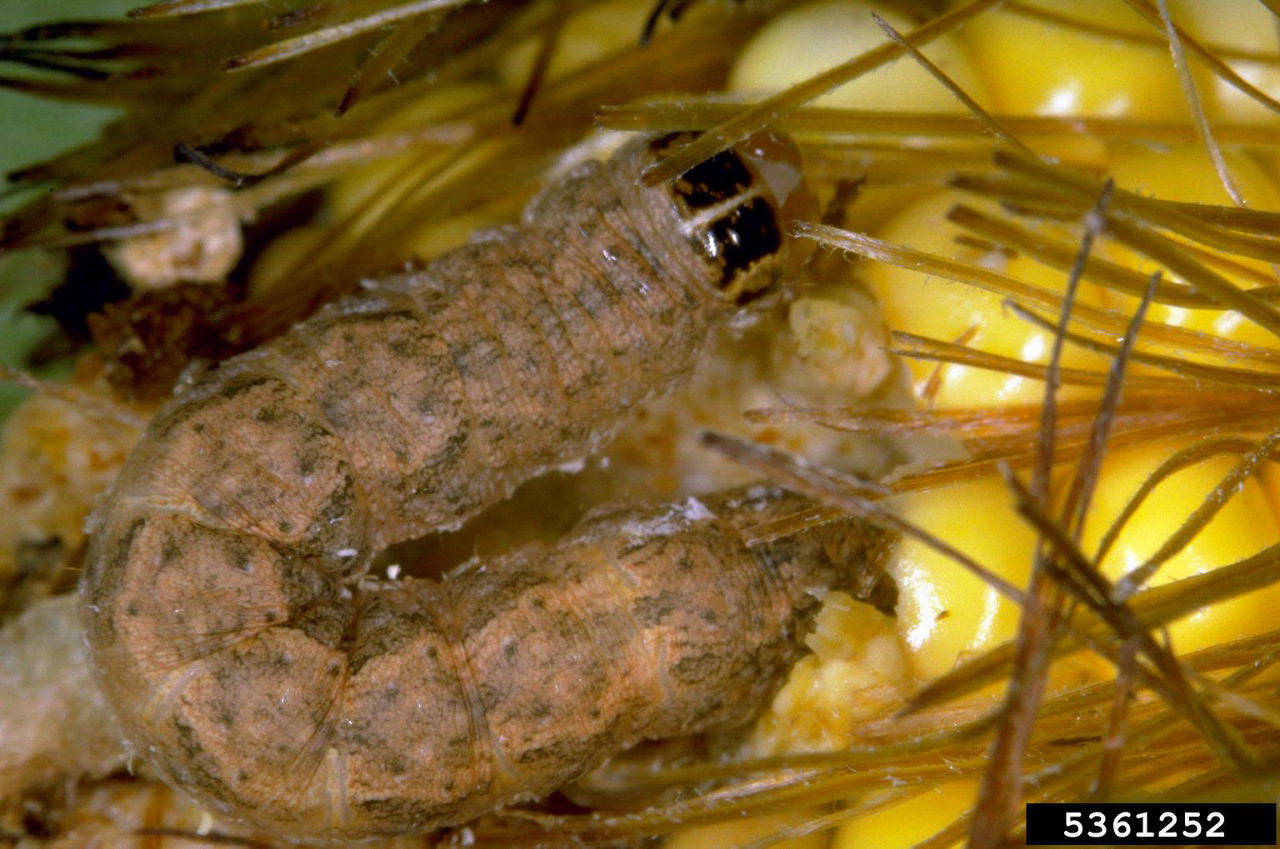7 MIN READ
Late Season Scouting to Plan for Harvest and Next Season
July 8, 2020
Late season scouting of corn can help assess the season in preparation for harvest and planning for next season.
Issues that occurred during the growing season can be identified and management strategies can be developed to help minimize any issues going forward.
Stalk and Ear Issues
Insects1,2,3
Depending on geography, there are a handful of caterpillars that can be found attacking the ear or stalk during late season scouting. The European corn borer (Figure 1a) and the southwestern corn borer (Figure 1b) can be found feeding within the ear shank, stalk, or ear and occasionally on kernels. The western bean cutworm (Figure 1c), corn earworm (Figure 1d), and fall armyworm (Figure 1e) are found almost exclusively feeding on the ear. The usual feeding location of the corn earworm is at the ear tip, and occasionally larvae can be found at the ear butt. The corn earworm color can be extremely varied ranging from green to almost black. The larvae are cannibalistic, so usually no more than one is found per ear. The diagnostic character for this species is the tan colored head. The western bean cutworm is often found feeding at the tip as well, but the larvae bore into the ear at any location along the ear. There can be multiple larvae on each ear. The diagnostic character for this species is the two black to dark brown bars behind the head. The fall armyworm also bores into the husk at any location along the ear but will feed along the side of the ear consuming the kernels. The diagnostic character for this species is the inverted white Y between the eyes with a black or dark brown head capsule.
Other Late Season Ear Feeding Insects
Stink bugs and picnic beetles can also be found feeding on corn late season. Stink bug injury to kernels causes a scarring or bruising appearance on the kernels. Injury is typically found at the ear tip. Picnic beetles are often found feeding on fermenting kernels that have been injured by other insects or birds.
Stalk and Ear Rots4,5
There are several stalk and ear rots that can occur. Stalk rots are frequently favored by good to excellent growing conditions early in the season that encourage maximum kernel set and development followed by stress during grain fill. Carbohydrate remobilization, unbalanced soil nutrients, compaction, and lack of sunny days are some stress factors that may predispose the plant to infection by stalk rots. Common stalk rots include: Anthracnose (Figure 2a), Diplodia, Fusarium, Gibberella (Figure 2b), and charcoal rot.
Sources
1Jensen, B. 2016. “Worms” in corn ears. University of Wisconsin Extension. https://ipcm.wisc.edu/blog/2016/09/worms-in-corn-ears/.
2Bessin, R. 2019. Southwestern corn borer. University of Kentucky Extension. https://entomology.ca.uky.edu/ef108.
3Reisig, D. 2014. Stink bugs in corn. North Carolina State University Extension. https://entomology.ces.ncsu.edu/2014/07/stink-bugs-in-corn/.
4Thelen, M. 2012. Late-season scouting of corn and soybean fields is worth the effort. Michigan State University Extension. https://www.canr.msu.edu/news/late-season_scouting_of_corn_and_soybean_fields_is_worth_the_effort
5Jackson, Ziems, T. 2016. Scouting for stalk and ear rot diseases. University of Nebraska Extension. https://cropwatch.unl.edu/2016/scouting-ear-and-stalk-rot-diseases.
6Sawyer, John. 2004. Nutrient deficiencies and application injuries in field crops. Iowa State University Extension. https://crops.extension.iastate.edu/files/article/nutrientdeficiency.pdf
6014_S3










